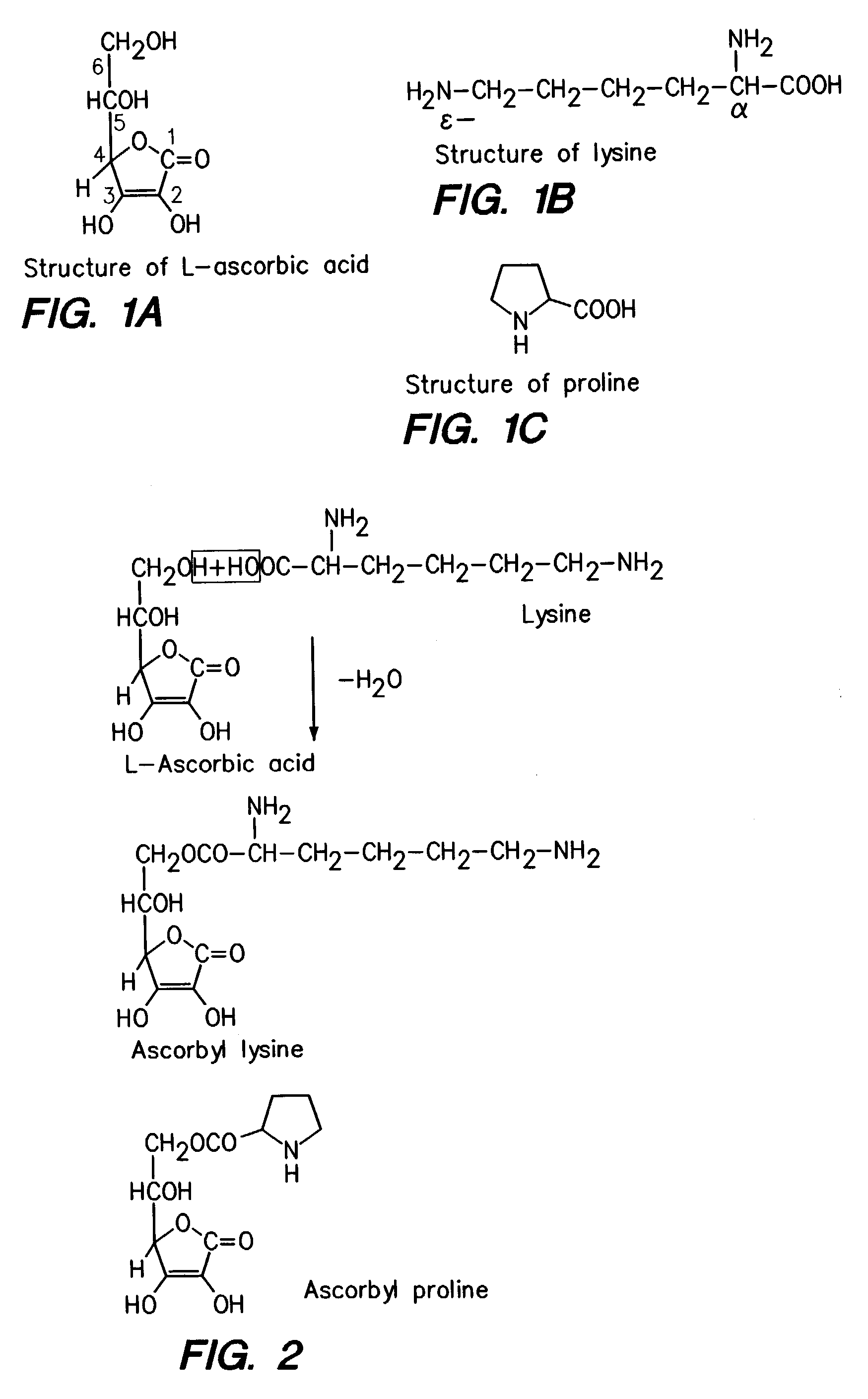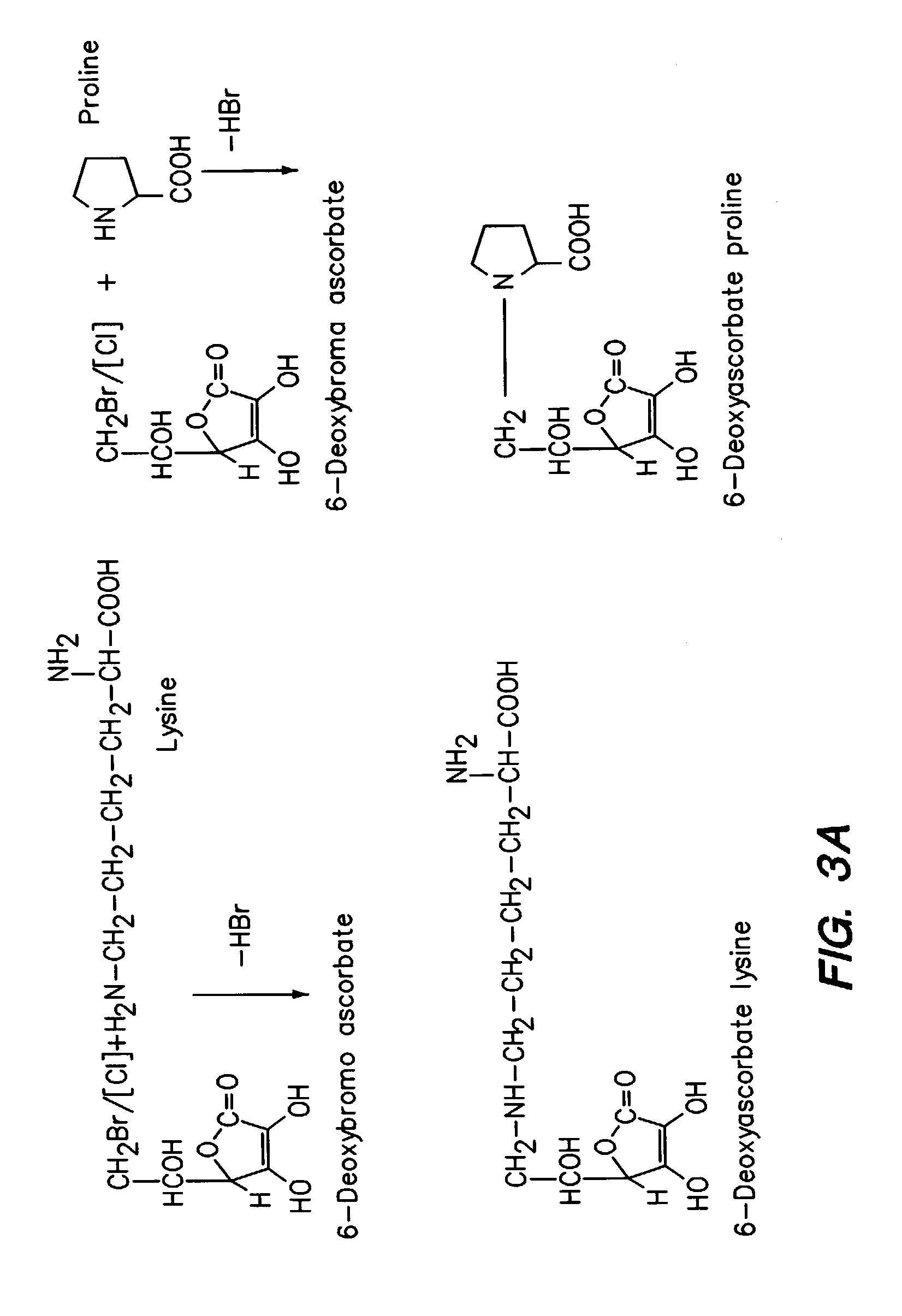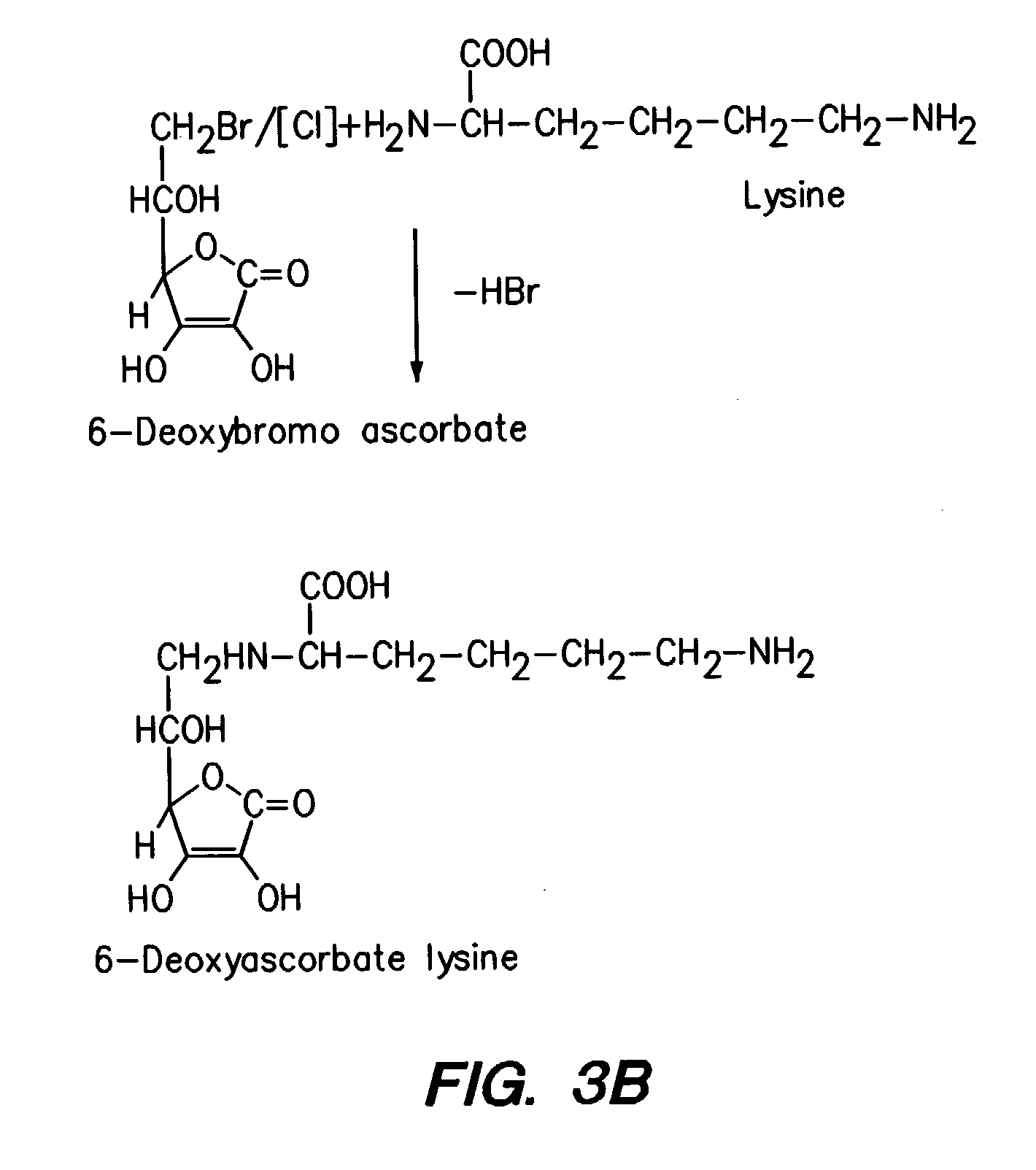Novel ascorbic acid compounds, methods of synthesis and application use thereof
a technology of ascorbic acid and compounds, applied in the field of new ascorbic acid compounds, methods of synthesis and, can solve the problems of affecting the formation of collagen, affecting the life of the patient, tissue weakness and eventually, and achieving the effect of preventing the degradation of the extracellular matrix
- Summary
- Abstract
- Description
- Claims
- Application Information
AI Technical Summary
Benefits of technology
Problems solved by technology
Method used
Image
Examples
example 1
Synthesis of L-ascorbyl-6-lysine
[0216] The standard procedure of condensation of an alcohol with an acid is used. The procedure of Cousins et al R. C. Cousins, P. A. Seib, R. C. Hoseney, C. W. Deyoe, Y. T. Lianc, and D. W. Lillard., J Am Chem Soc: 54, 308 (1977) is detailed as follow.
[0217] In brief, ascorbic acid (8 mmoles) is added to a solution of lysine (10 mmoles) in about 20 ml of sulfuric acid. After being stirred for about 2 hours at room temperature, the reaction mixture is allowed to stay at room temperature overnight. It is then poured over crushed ice. Exacted twice with ether and washed with water and dried over sodium sulfate. Ether is removed. The product is crystallized with ethanol and dried in vacuum.
example 2
Synthesis of L-ascorbyl-6-proline
[0218] The procedure is used to synthesized ascorbyl 6-proline. Ascorbic acid (8 mmoles) is added to a solution of proline (10 mmoles) in about 20 ml of sulfuric acid and stirred for about 2 hours at room temperature and allowed to stay overnight.
[0219] The reaction mixture is poured over crushed ice, extracted twice with ether and washed with water. Dried over sodium sulfate, ether is removed and the product is crystallized from ethanol, dried in vacuum.
example 3
Synthesis of Ascorbyl-2-lysine and ascorbyl 2-proline
[0220] Ascorbyl-2-lysine and ascorbyl-2-proline are also synthesized. To prepare the derivatives at 2-position the hydroxy groups at 5- and 6-positions have to be first protected. Jack and Jones (K. G. A. Jackson and J. K. N. Jones, Can J Chem. 47: 2498 (1969)) procedure is adopted to prepare 5,6-0-isopropylidene ascorbic acid. 5,6-0-isopropylidene ascorbic acid (5 mmoles) in dry pyridine and acetone is added to lysyl chloride (7 mmoles) or prolyl chloride-(7 mmoles) and the products are worked up according to Cousins et al. and crystallized from ethanol.
[0221] In additional, 2,6-di-substituted derivatives of lysine or proline are synthesized by reacting L-ascorbic acid either with excess of lysyl chloride or prolyl chloride in dry pyridine as described above.
[0222] Furthermore, di-substituted derivatives of L-ascorbic acid with different groups at 2- and 6-positions are synthesized by reacting with respective chlorides by combina...
PUM
| Property | Measurement | Unit |
|---|---|---|
| water soluble | aaaaa | aaaaa |
| lipid soluble | aaaaa | aaaaa |
| stress | aaaaa | aaaaa |
Abstract
Description
Claims
Application Information
 Login to View More
Login to View More - R&D
- Intellectual Property
- Life Sciences
- Materials
- Tech Scout
- Unparalleled Data Quality
- Higher Quality Content
- 60% Fewer Hallucinations
Browse by: Latest US Patents, China's latest patents, Technical Efficacy Thesaurus, Application Domain, Technology Topic, Popular Technical Reports.
© 2025 PatSnap. All rights reserved.Legal|Privacy policy|Modern Slavery Act Transparency Statement|Sitemap|About US| Contact US: help@patsnap.com



